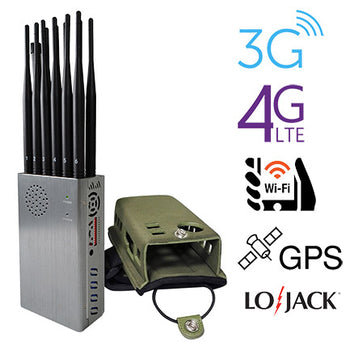The latest jammer on the market
Interference techniques have many uses. In all aspects of our lives, the growing importance of surveillance has led more and more people to believe that privacy is harder than ever to maintain. Consequently, some of them advocate the use of jammer or jamming techniques.
Geographically speaking, interference markets are diverse and cover many areas. It is also strongly influenced by geopolitical trends, movements and relations between nations. For example, in recent years the interest of Japan, China, North Korea and South Korea in jamming technology has increased significantly. This growth can be attributed to territorial disputes in the region and to North Korea's unstable political system.

Overall, the United States is one of the largest markets for interference technologies. The US military has long been known for its innovation and specialization, especially in the areas of surveillance and security. Support for these technologies in North America has allowed them to grow at an alarming rate. In recent years, the types of innovations supported by the US military have also directly sponsored the development of smart and portable wifi jammers.
The fact that jamming technologies are commonly used in military applications means that quality and supplier control are highly correlated in the market. In many countries / regions, jammers are subject to strict regulations and quality controls. Laws like these directly affect the products that suppliers can operate and the scope of sales of those products.
The latest development in smart jamming involves the incorporation of smart jammers into wireless communications. More specifically, intelligent jammers can be used to interrupt the exchange of information. This becomes all the more important as we rely more and more on this type of network for communication.
New developments in smart jammers involve adjusting the frequency bands on which smart jammers can operate. Interfering nodes become more sensitive, allowing them to respond more quickly to information received. In addition, interfering nodes have been improved in that they can be hidden in the time-frequency plane. These are jammers commonly referred to as smart cell phone jammer.
Now the cost of manufacturing jammers is lower than ever. The materials are also cheaper. As a result, intelligent jammers can be used to target and directly transmit data packets. This makes it an interesting potential solution in many smart applications. Currently, the only way to avoid such interference is to use frequency hopping or gaming algorithms.













